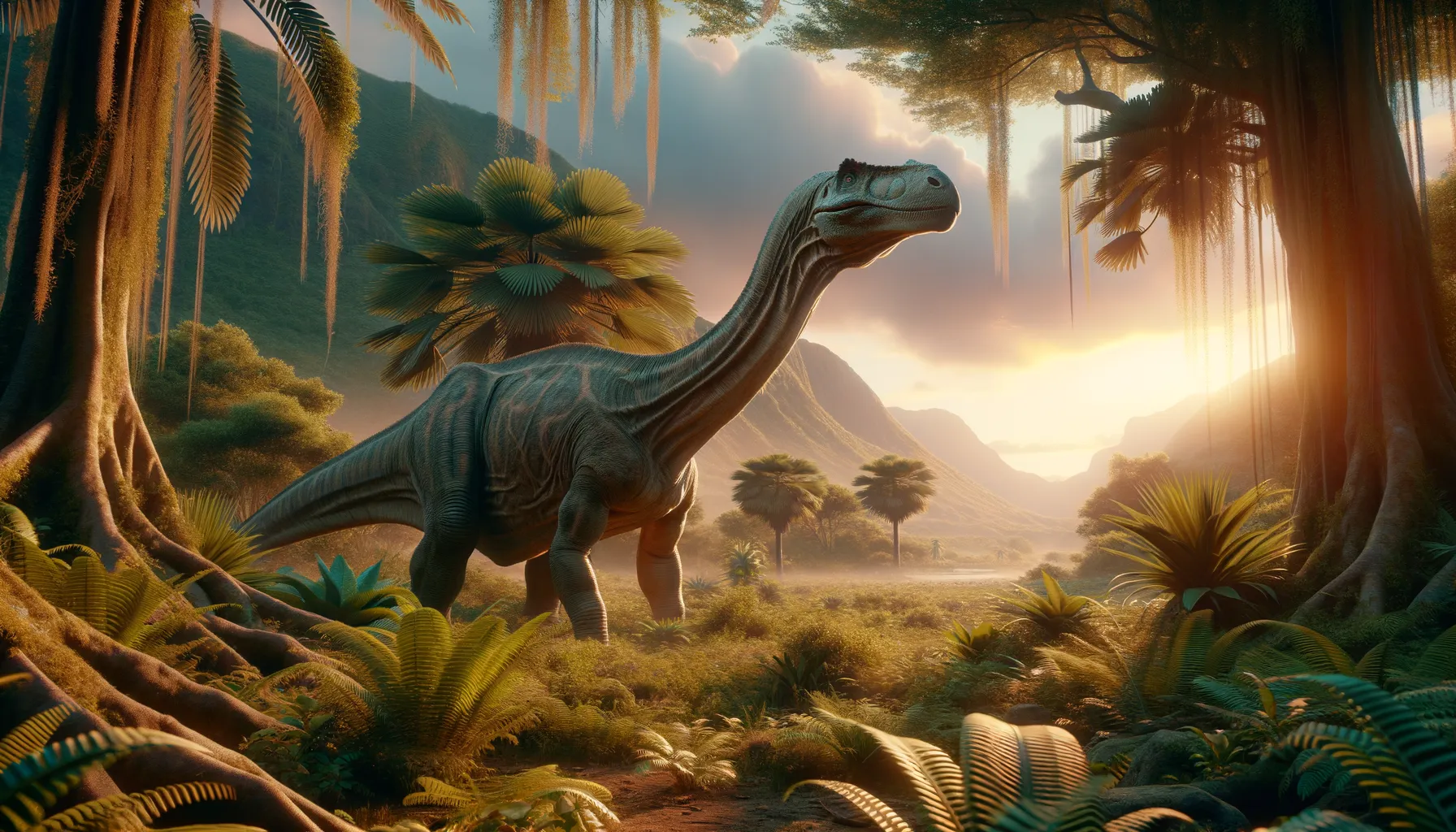
Traukutitan
A giant of the ancient world.
Period
Cretaceous
Length
Measured around 25 meters in length.
Height
Could reach heights of up to 15 meters.
Weight
Estimated to weigh up to 30 tons.
Traukutitan was a massive sauropod dinosaur that roamed the earth during the Cretaceous period. With its long neck and hefty body, it was an impressive sight and one of the largest creatures to walk the planet. Its fossil remains were first discovered in Argentina, providing valuable insights into the diverse dinosaur species that existed in South America. This giant herbivore became an icon of prehistoric life and continues to fascinate scientists and dinosaur enthusiasts alike.
Diet
Traukutitan was an herbivore, feeding primarily on the abundant vegetation of its time. Its long neck allowed it to reach high into trees to consume leaves and possibly fruits.
Hunting
As an herbivore, Traukutitan did not hunt but instead spent much of its time browsing for plant material. It likely used its size as a defense mechanism against predators rather than engaging in active hunting.
Environmental challenges
Traukutitan lived in a time of changing climates and ecosystems, which presented challenges such as finding enough food to sustain its massive body. Predatory threats from large theropods also posed a constant risk. Adaptations like its size and social behavior might have helped it cope with these environmental pressures.
Speed
Likely slow-moving, suited for its size.
Lifespan
Estimated to live several decades.
First discovery
Discovered in Argentina in 2011.
Fun Facts
- Traukutitan was a giant dinosaur that lived around 86 million years ago during the Late Cretaceous period.
- It belonged to a group of dinosaurs known as sauropods, which were known for their long necks and tails.
- The name 'Traukutitan' is derived from 'Trauku', a mythical giant from South American folklore, and 'Titan', meaning giant in Greek.
- Traukutitan's remains were discovered in Argentina, a country rich in dinosaur fossils.
- This dinosaur is estimated to have been around 25 to 30 meters long, making it one of the larger sauropods.
- Traukutitan likely fed on plants, using its long neck to reach high vegetation in its environment.
- The discovery of Traukutitan has helped scientists learn more about the diversity of sauropods in South America.
Growth and Development
Traukutitan, like other sauropods, likely experienced rapid growth during its early years. This fast growth rate was crucial for reaching a size where it was less vulnerable to predators. It may have continued to grow slowly throughout its life, gaining bulk and strength over time.
Habitat
Traukutitan inhabited a variety of environments, including forested areas and open plains, where it could find ample food. The diverse ecosystems of Cretaceous Argentina provided it with the resources needed to thrive. Fossil evidence suggests it lived in regions that were once lush and verdant, supporting large herbivorous creatures.
Interaction with other species
Traukutitan coexisted with various other dinosaur species, including potential predators and fellow herbivores. Its massive size likely deterred attacks from smaller carnivores, and its social nature may have involved forming herds for protection.
Natural lifespan
Traukutitan enjoyed a long natural lifespan, living for several decades.
Reproduction
Traukutitan likely reproduced by laying eggs, as with other sauropods. The eggs could have been incubated on the ground, shielded by vegetation or other natural shelters.
Social behaviour
This dinosaur was probably a social creature, living and moving in herds for protection and social interaction. Such behavior would have provided mutual defense against predators and helped in locating food sources.
Fossil locations
Fossils of Traukutitan have been found in Argentina, specifically in the region known as Patagonia. These discoveries have provided key insights into the sauropod diversity of the Cretaceous period in South America.
